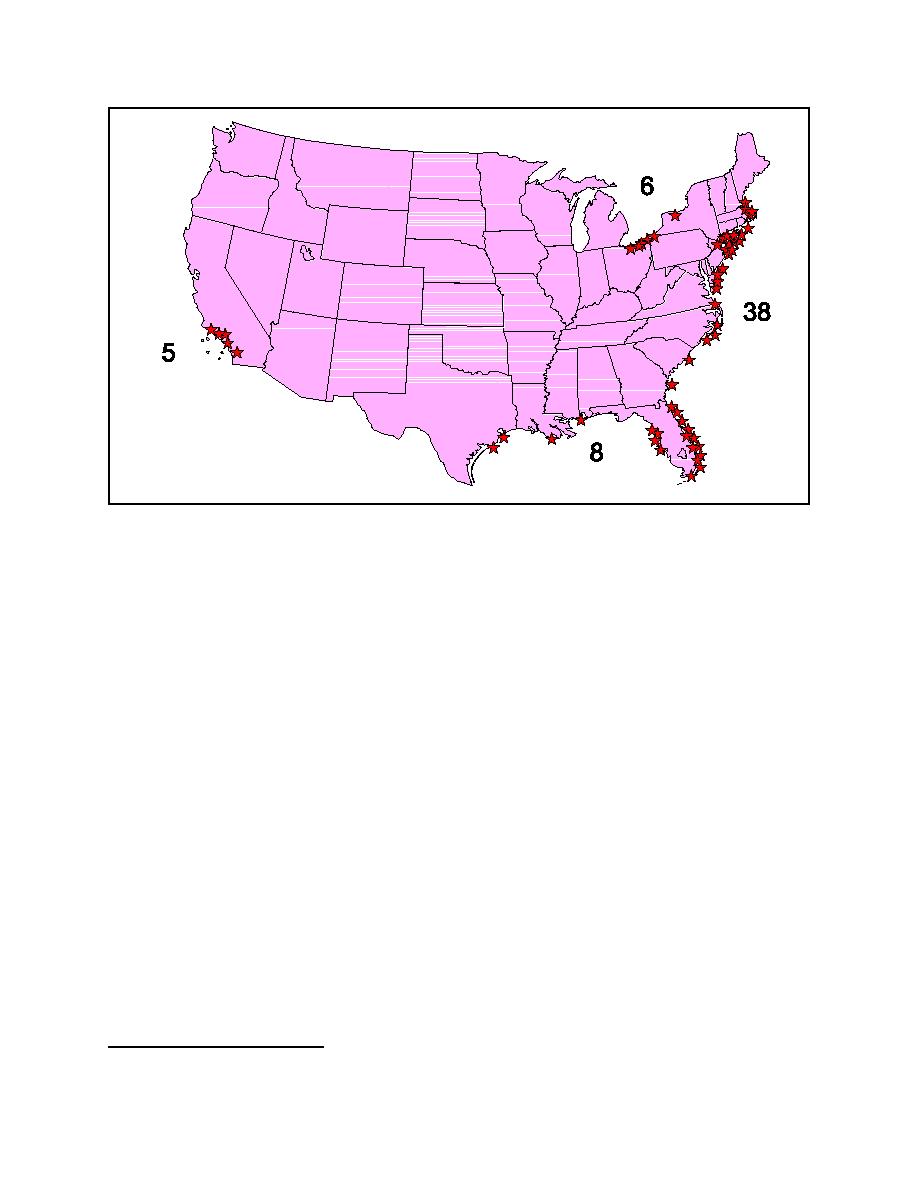
EM 1110-2-1100 (Part I)
30 Apr 02
Figure I-3-3. Location of 57 large Congressionally authorized shore protection and beach erosion control
projects. Some 26 small projects with limited scope and low cost (less than a few hundred thousand dollars)
are not shown (from Hillyer 1996)
I-3-7. Coastal Engineering in the United States1
a. Nineteenth century projects. From the birth of the United States through the 18th century, local and
Federal coastal projects were designed to accommodate and facilitate growth. Harbors that were usable in
their natural setting in the 18th century had to be improved during the industrial age to service the 19th
century's larger, steam powered, ocean-going vessels. Though the Corps' attention focused on navigation-
related improvements, its coastal activities ranged from beach reconstruction to blasting better shipping
channels to building new ports and lighthouses. Some of the early projects are summarized below:
(1) Currents sweeping by Sullivan's Island, South Carolina, caused substantial erosion that threatened
Fort Moultrie in the 1820s. A major reclamation program was started by the USACE under its authority to
solve the erosion problems of existing fortifications (Moore 1982).
(2) Congress appropriated funds in 1826 for the Corps to combat erosion of valuable sand spits
protecting Duxbury and Provincetown Harbors in Massachusetts and to construct jetties at Warren River and
Martha's Vineyard to prevent sand from being carried by currents into the harbors (Parkman 1978).
(3) Attention of the United States Government was first directed to Erie Harbor at the close of the War
of 1812. In 1823, the Board of Engineers presented an elaborate plan for improvement of the harbor's
entrance. In May of 1824, Congress authorized improvements and protection of the vulnerable Presque Isle
Peninsula (Goreki and Pope 1993). Engineering work continues at Presque Isle to this day (Figure V-3-10).
1
One of the most detailed discussions of the history of coastal engineering in the United States is Weigel and Saville 1996.
I-3-10
History of Coastal Engineering


 Previous Page
Previous Page
